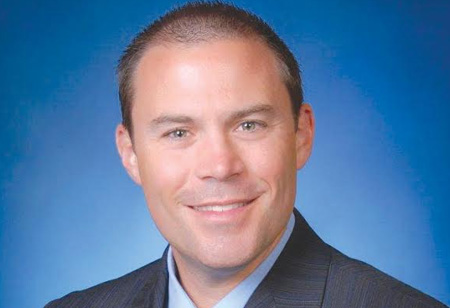 Josh Scheumann, Director, Enterprise Solutions, KPMG
Josh Scheumann, Director, Enterprise Solutions, KPMGThe term “Cloud” started becoming a buzz word about seven years ago, when software vendors began more strongly pushing Internet-based computing and “hosted” software solutions as viable alternatives to on premise (internally housed) applications. Over that last four years, however, the solutions themselves have really gained traction, and both the business and IT communities in organizations have begun looking hard at the available offerings.
While we wait for cloud solutions to cross the tipping point, on-prem solutions will continue getting better
Because of this uptick in demand, supply also has increased. New companies have emerged and long-running companies have spent significant research and development dollars building new applications from the ground up.
The buildup of the demand for Cloud applications is reaching new heights. Industry experts predict 2017 will be the strongest yet for Cloud solution implementations and for the adoption of more and more hosted versus on premise options. This shift is having an impact not simply on just where applications are housed. Now, Cloud solutions are implemented differently, managed differently, and maintained differently.
Implementing Cloud
The first paradigm shift we see as a result of a company shifting to a Cloud- based solution is the way the solution is implemented. Gone are the long runways of implementation timelines filled with multiple months of requirements-gathering, white-boarding sessions and consultants locked behind closed doors configuring the system in preparation for that first testing event. Hosted applications are now implemented in drastically shorter timeframes with some solutions and/or methodologies having preconfigured setups, workflows, and reporting options.
This change now allows companies to get to that first testing event very quickly and have their users (hands-on) in the systems within weeks instead of months. This not only energizes the company’s user base but also reduces implementation costs and raises return on investment by shortening the payback period. It also motivates companies to get off legacy systems that no longer serve the company’s changing needs and are well past their useful life.
Management of Cloud Systems
The move to the Cloud doesn’t simply impact how a new system or solution is implemented. It also impacts how that system is maintained. Gone is the need to keep a small army of database administrators to care and feed the on premise system and monitor up-time and performance. In fact, the role of the IT department is greatly impacted by the move to Cloud. They are not the only internal group that experiences a change. Finance and operational departments are also affected because of the shift in who really does “own” the maintenance of the new system. Companies now have a real choice on the business versus IT owning the system.
Finance departments, operational groups, and end-users have been asking for this shift for a while. Instead of depending on IT to help with month-end closes or users having to make calls/emails in order to process transactions and push/pull interfaced data, the business can now manage these processes themselves. This has the potential to shorten process times and increasing efficiencies for the various internal teams and perhaps even reducing month end close times.
Maintaining (Upgrading) Cloud Systems
The last component is around the maintenance of the new system. Specifically, how do you make sure the system is current or up-to-date and not out of support or behind on releases? This has been a struggle for companies in the past. It is especially problematic when you have a highly customized system and causes an increase in complications. The result can be problems upgrading an application without high-risk, cost, and timeline impacts.
Cloud implementations focus on ensuring new systems are implemented without customizations (outside of custom reporting) so upgrades can be processed quickly and nearly riskless. In fact, there is a paradigm shift in not even calling them upgrades anymore. The more common term is a new “release.” Many software providers are pushing new releases out twice a year or quarterly. In order to support and manage to this speed of new releases, it’s imperative to stay “un-customized” and maintain documentation and a testing process that allows new releases to be pushed out over a weekend with little to no downtime -- and zero impact to the end-user community.
Summary
Cloud systems are definitely here to stay. Companies will need to adjust their old thinking and conventions if they are going to move to the Cloud. However, the software providers are ready to take them through this change, and consulting companies that implement the systems are also ready. New implementation methodologies are available for managing the standup of the new systems and maintenance and management approaches have already been built to keep the systems running for the end users that need them.
Check Out Review Of CIOReview : Crunchbase, Glassdoor
Check This Out : CIOReview Overview, Muckrack












